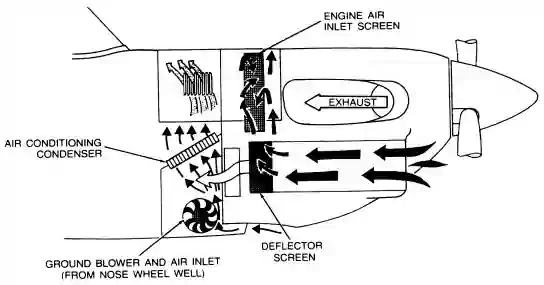Operation of Aircraft Systems
All aircraft have the requirement for essential interconnected and integrated systems, the performance of which is critical to safe operations.
Introduction
Introduction
- All aircraft have the requirement for essential interconnected and integrated systems, the performance of which is critical to safe operations
- Several basic aircraft systems are universal, but even the most simple aircraft will contain complex systems
- These systems are reliant on some power source, meaning they rely upon a powerplant not just to move the airplane, but run the systems
- Finally, there are a variety of support systems which for comfort, regulatory, or human physiological reasons, exist to support flight operations, especially those considered high-performance
- Understanding the aircraft systems is critical to its safe operation and proper maintenance
Fundamental Aircraft Systems
Fundamental Aircraft Systems
- Most aircraft have a standardized set of systems which diverge depending on their designed purpose [Figure 1]
- Generally speaking, this starts with Pitot-static systems, the manipulation of air pressure which enable avionic and instrument function
- The aircraft's induction system is responsible for the vacuum system, which powers typically gyroscopic systems
- Individual aircraft systems will vary between vacuum, gyroscopic, or electrically driven(discussed below); however, a combination of the previously mentioned systems are necessary to power many primary flight instruments, including the Airspeed Indicator, Altimeter, and Vertical Speed Indicator
- Pilots must physically manipulate an aircraft's state to meet the needs of a given phase of flight
- Rudimentary control of the aircraft requires flight control systems
- Illumination is accomplished through the aircraft lighting systems, providing both interior and exterior lighting arrays.
Complex Systems
Complex Systems
- Certain aircraft operations demand increasingly complex aircraft, and therefore systems
- Hydraulics & pneumatics help power landing gear, brakes, and even control surfaces when cabling is not enough
- Demanding operations call for complex aircraft requiring powerplants with enough power to deliver the desired performance
- While general aviation aircraft typically incorporate a fixed-pitch propeller, complex aircraft employ constant-speed propellers
- Turbo-charging or super-charging systems provide that boost of power
Powerplant Systems
Powerplant Systems
- The powerplant (engine) produces the power/thrust necessary for flight [Figure 2]
- Additional systems are related to the powerplant include:
Support Systems
Support Systems
- Some systems are supplemental
- Systems such as cabin heating and cooling systems condition air for the pilot and passengers
- Pressurization systems allow for high-performance aircraft to operate at high altitudes, taking advantage of atmospheric conditions that enhance aircraft performance
- Supplemental oxygen systems become necessary to meet regulatory and human performance requirements associated with operating at higher altitudes
- Weather poses a threat to the aircraft, warranting icing mitigation systems to penetrate freezing layers found at higher altitudes and especially during winter months
AOPA A&P Podcasts
AOPA A&P Podcasts
- The AOPA publishes A&P Podcasts monthly, answering technical questions provided by the aviation community
Conclusion
Conclusion
- All aircraft have a requirement for essential systems
- Understanding how systems operate on their own is the first step in understanding how they integrate
- For example, landing gear may be electronically operated, but hudraulically actuated
- Avionics & instruments are dependent upon aircraft systems
- Refer to section 7 of the Airplane Flight Manual/Pilot Operating Handbook for information specific to the aircraft flown
- Review its contents regularly
- Also, various manufacturer and owners group websites can be a valuable source of additional information
- See also: AOPA's Aircraft Systems safety spotlight
- Still looking for something? Continue searching:
References
References

